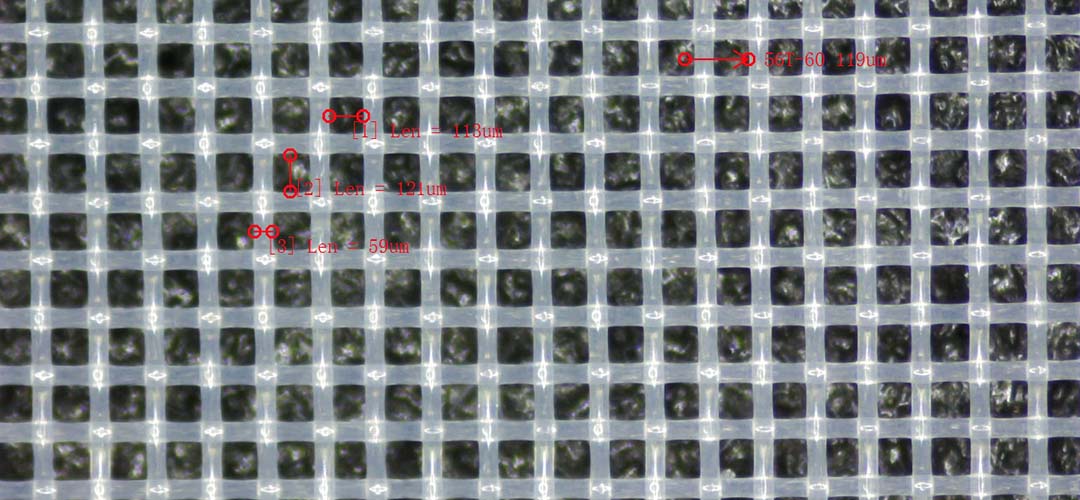Table of Contents
Benefits of Using nylon filter mesh
Nylon filter mesh is a versatile and efficient material that is commonly used in a variety of industries for filtration purposes. Its durability, flexibility, and resistance to chemicals make it an ideal choice for filtering liquids and gases. In this article, we will provide a step-by-step guide on how to use nylon filter mesh for maximum efficiency.
The first step in using nylon filter mesh is to select the appropriate mesh size for your specific application. Nylon filter mesh is available in a wide range of mesh sizes, which determine the size of particles that can be filtered out. It is important to choose a mesh size that is suitable for the size of particles you are trying to filter. A finer mesh size will filter out smaller particles, while a coarser mesh size will allow larger particles to pass through.
Once you have selected the appropriate mesh size, the next step is to cut the nylon filter mesh to the desired size. Nylon filter mesh is typically sold in rolls or sheets, so you will need to measure and cut the mesh to fit your filtration system. It is important to ensure that the mesh is cut to the correct size to prevent any gaps or leaks in the filtration process.
After cutting the nylon filter mesh to size, the next step is to install it in your filtration system. Nylon filter mesh can be easily installed in a variety of filtration systems, including filter bags, filter cartridges, and filter screens. Simply place the mesh in the designated area of the filtration system and secure it in place using clips or fasteners.
Once the nylon filter mesh is installed, the next step is to test the filtration system to ensure that it is working properly. Run a test batch of the liquid or gas that you are filtering through the system and check the output for any particles or impurities. If the filtration system is not working as expected, you may need to adjust the mesh size or make other modifications to improve its efficiency.
One of the key benefits of using nylon filter mesh is its ease of maintenance. Nylon filter mesh is easy to clean and can be reused multiple times, making it a cost-effective filtration solution. To clean nylon filter mesh, simply remove it from the filtration system and rinse it with water or a mild detergent to remove any trapped particles. Allow the mesh to dry completely before reinstalling it in the filtration system.

In conclusion, nylon filter mesh is a versatile and efficient material that is ideal for a wide range of filtration applications. By following the steps outlined in this guide, you can use nylon filter mesh for maximum efficiency in your filtration system. From selecting the appropriate mesh size to installing and maintaining the mesh, using nylon filter mesh is a straightforward process that can help you achieve optimal filtration results.
Step-by-Step Guide on Proper Installation of Nylon Filter Mesh
Nylon filter mesh is a versatile and efficient material that is commonly used in a variety of industries for filtration purposes. Whether you are in the food and beverage industry, pharmaceuticals, or any other industry that requires filtration, using nylon filter mesh can help you achieve maximum efficiency in your filtration process. However, in order to get the most out of your nylon filter mesh, it is important to properly install and maintain it. In this step-by-step guide, we will walk you through the process of installing nylon filter mesh for maximum efficiency.

The first step in using nylon filter mesh is to select the right mesh size for your specific application. Nylon filter mesh comes in a variety of mesh sizes, ranging from very fine to coarse. The mesh size you choose will depend on the size of the particles you are trying to filter out. For example, if you are filtering out very fine particles, you will want to choose a finer mesh size. Conversely, if you are filtering out larger particles, a coarser mesh size may be more appropriate.
Once you have selected the right mesh size for your application, the next step is to properly cut the nylon filter mesh to fit your filtration system. It is important to ensure that the mesh is cut to the correct size so that it fits snugly in your filtration system. If the mesh is too small, it may not effectively filter out particles, while if it is too large, it may not fit properly in your system. Take your time to measure and cut the mesh accurately to ensure a proper fit.
After cutting the nylon filter mesh to size, the next step is to install it in your filtration system. Carefully place the mesh in the designated area of your system, making sure that it is securely in place. You may need to use clips or other fasteners to hold the mesh in place, depending on the design of your filtration system. Once the mesh is installed, double-check to ensure that it is properly positioned and secure.
Once the nylon filter mesh is installed in your filtration system, the final step is to regularly maintain and clean the mesh to ensure maximum efficiency. Over time, the mesh may become clogged with particles, reducing its effectiveness. To prevent this, it is important to regularly clean the mesh by rinsing it with water or using a mild detergent. Additionally, inspect the mesh periodically for any signs of wear or damage, and replace it as needed to maintain optimal filtration performance.
In conclusion, using nylon filter mesh for filtration purposes can help you achieve maximum efficiency in your filtration process. By following this step-by-step guide on proper installation and maintenance of nylon filter mesh, you can ensure that your filtration system operates at peak performance. Remember to select the right mesh size for your application, cut the mesh to fit your system, install it securely, and regularly maintain and clean the mesh for optimal results. With proper care and maintenance, nylon filter mesh can help you achieve efficient and effective filtration in your industry.
Tips for Maintaining Nylon Filter Mesh for Maximum Efficiency
Nylon filter mesh is a versatile and durable material that is commonly used in a variety of industries for filtration purposes. From food and beverage processing to pharmaceuticals and water treatment, nylon filter mesh plays a crucial role in ensuring the quality and purity of products. To maximize the efficiency and longevity of your nylon filter mesh, it is important to follow proper maintenance and cleaning procedures. In this article, we will provide a step-by-step guide on how to use nylon filter mesh for maximum efficiency.
First and foremost, it is essential to properly install your nylon filter mesh to ensure optimal performance. Make sure that the mesh is securely fastened in place and that there are no gaps or leaks that could compromise its effectiveness. Additionally, be sure to select the appropriate mesh size and micron rating for your specific application to achieve the desired level of filtration.
Once your nylon filter mesh is installed, it is important to regularly inspect and clean it to prevent clogging and maintain efficiency. Depending on the type of contaminants being filtered, the frequency of cleaning may vary. In general, it is recommended to clean the mesh at least once a week to prevent buildup and ensure consistent filtration performance.
To clean your nylon filter mesh, start by removing it from the filtration system and rinsing it with clean water to remove any loose debris. Next, prepare a cleaning solution using a mild detergent or specialized filter cleaner and soak the mesh for a few hours to dissolve any stubborn contaminants. Gently scrub the mesh with a soft brush or sponge to remove any remaining residue, being careful not to damage the delicate fibers.

After cleaning, thoroughly rinse the nylon filter mesh with clean water to remove any traces of the cleaning solution. Allow the mesh to air dry completely before reinstalling it in the filtration system. It is important to ensure that the mesh is completely dry to prevent mold and bacteria growth, which can compromise filtration efficiency and pose health risks.
In addition to regular cleaning, it is important to inspect your nylon filter mesh for signs of wear and tear. Look for tears, holes, or fraying along the edges of the mesh, as these can indicate that the mesh needs to be replaced. It is also important to check for any signs of discoloration or foul odors, which may indicate bacterial growth or chemical contamination.
By following these simple steps, you can ensure that your nylon filter mesh remains in optimal condition and continues to provide efficient filtration for your application. Proper maintenance and cleaning are essential for maximizing the longevity and performance of your nylon filter mesh, so be sure to incorporate these practices into your regular maintenance routine.
In conclusion, nylon filter mesh is a valuable tool for achieving high-quality filtration in a variety of industries. By following the step-by-step guide outlined in this article, you can ensure that your nylon filter mesh remains in top condition and continues to provide maximum efficiency for your filtration needs. Remember to regularly inspect, clean, and maintain your nylon filter mesh to prolong its lifespan and optimize its performance.






